Seasonings are a vital part of our culinary world, enhancing the flavors of various dishes and making meals more enjoyable. Behind the delightful taste of your favorite seasoning blends lie food additives that serve essential functions, from preserving freshness to enhancing flavors. This article will provide a detailed guide to the most common types of food additives in seasonings and explore five specific examples for each category, including their functions, introductions, and recommended dosages.
Common Types of Food Additives in Seasoning
Food additives play various roles in seasoning production, and they can be broadly categorized into several types:
- Preservatives
- Flavor Enhancers
- Colorants
- Anti-caking Agents
- Sweeteners
- Antioxidants
- Emulsifiers and Stabilizers
Each of these categories serves a different purpose, from prolonging shelf life to improving the taste or appearance of the product. Let’s dive deeper into these categories and explore specific examples of additives commonly used in seasonings.
Preservatives
Preservatives are essential flavor ingredients because they stop microorganisms like bacteria, mold, and yeast from growing, preventing spoiling and extending shelf life.
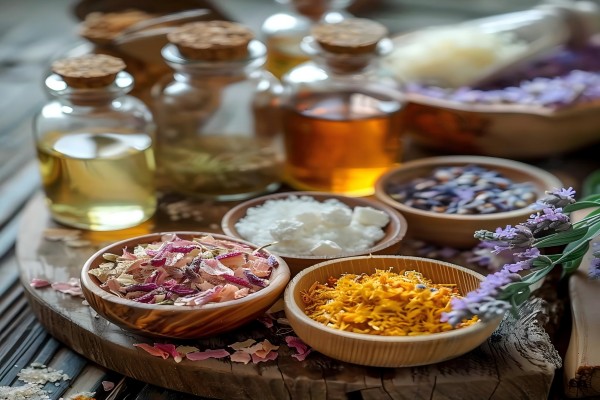
Example 1: Sodium Benzoate
- Introduction: Sodium benzoate is a widely used preservative in acidic foods, including seasonings, due to its effectiveness against mold and yeast.
- Recommended Dosage: Typically, sodium benzoate is used at concentrations ranging from 0.05% to 0.1% of the total product weight.
Example 2: Potassium Sorbate
- Introduction: Potassium sorbate is another commonly used preservative in seasonings, particularly effective in preventing the growth of mold and yeast.
- Recommended Dosage: The usual concentration in seasonings ranges from 0.1% to 0.3% of the total weight.
Example 3: Calcium Propionate
- Introduction: To keep some germs and mold from growing and to prolong the shelf life of seasonings, calcium propionate is frequently added.
- Recommended Dosage: Typical dosages are around 0.1% to 0.4% of the product’s total weight.
Example 4: Sodium Nitrite
- Introduction: Sodium nitrite is commonly used in cured meats and some savory seasonings. It stops microorganisms from growing, especially Clostridium botulinum.
- Recommended Dosage: It is used in very low concentrations, generally around 0.01% to 0.03%.
Example 5: Sorbic Acid
- Introduction: Sorbic acid, effective against various bacteria, yeast, and molds, is commonly used in seasonings, particularly those with lower pH levels.
- Recommended Dosage: The concentration of sorbic acid used in seasonings typically ranges from 0.05% to 0.2%.
Flavor Enhancers
Flavor enhancers do not necessarily have a flavor of their own, but they boost the natural flavors of seasonings, making the taste of foods more intense.
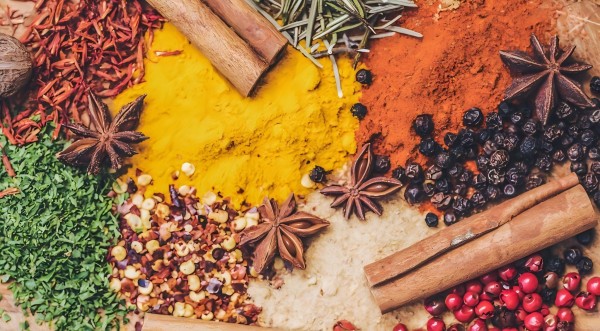
Example 1: Monosodium Glutamate (MSG)
- Introduction: MSG is one of the most famous taste enhancers. It has a savory umami flavor and is frequently utilized in a wide variety of seasoning applications.
- Recommended Dosage: The typical usage level in seasonings is between 0.1% and 0.8% of the total weight.
Example 2: Disodium Inosinate
- Introduction: Disodium inosinate is a flavor enhancer that works synergistically with MSG to create a richer umami flavor. It is commonly found in seasoning blends for meats and snacks.
- Recommended Dosage: Disodium inosinate is usually added at concentrations between 0.01% and 0.04%.
Example 3: Disodium Guanylate
- Introduction: Another umami-enhancing ingredient that is frequently combined with MSG and disodium inosinate in seasonings is disodium guanylate.
- Recommended Dosage: The typical dosage for disodium guanylate is similar to disodium inosinate, around 0.01% to 0.04%.
Example 4: Yeast Extract
- Introduction: Yeast extract is a natural flavor enhancer that contains high levels of glutamic acid, contributing to the umami flavor. It is often used in bouillon cubes and savory seasonings.
- Recommended Dosage: The concentration of yeast extract in seasonings typically ranges from 0.5% to 1.5%.
Example 5: Hydrolyzed Vegetable Protein (HVP)
- Introduction: HVP is a flavor enhancer that is produced by dissolving amino acids from vegetable proteins. It enhances the savory flavors in seasonings and is used in products like soup mixes and snacks.
- Recommended Dosage: HVP is commonly used at concentrations between 0.5% and 2%.
Colorants
Colorants are added to seasonings to enhance or maintain their appearance, making the product visually appealing to consumers.
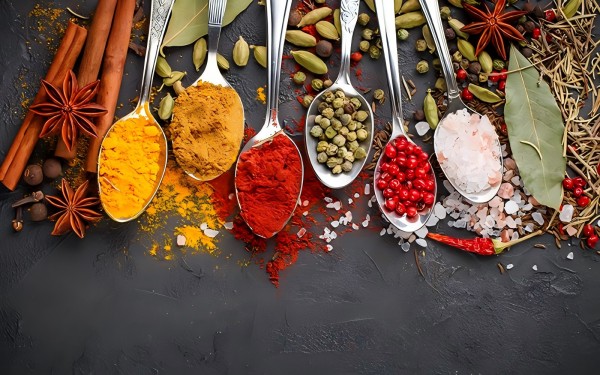
Example 1: Paprika Extract
- Introduction: Paprika extract is a natural colorant derived from peppers. It imparts a bright red-orange color to seasonings and is often used in spice blends like chili powder.
- Recommended Dosage: The typical concentration ranges from 0.1% to 0.5% of the total product weight.
Example 2: Annatto
- Introduction: Annatto, a natural colorant derived from achiote tree seeds, imparts a yellow to orange hue and is commonly used in dry rubs and cheese seasonings.
- Recommended Dosage: Annatto is typically used at concentrations between 0.01% and 0.05%.
Example 3: Caramel Color
- Introduction: Caramel color is one of the most widely used colorants, providing a brown hue to seasonings. It is used in products like barbecue seasoning and soy sauce powder.
- Recommended Dosage: The dosage varies but is generally between 0.5% and 2% depending on the desired color intensity.
Example 4: Titanium Dioxide
- Introduction: Titanium dioxide is a white colorant used to brighten or whiten seasonings. It is often used in powdered dairy products and sauces.
- Recommended Dosage: The concentration typically ranges from 0.1% to 1%.
Example 5: Turmeric
- Introduction: Turmeric is a natural yellow colorant and is frequently used in curry powders and other spice blends. It also has anti-inflammatory properties.
- Recommended Dosage: The concentration in seasonings generally ranges from 0.5% to 2%.
Anti-caking Agents
Anti-caking agents prevent seasoning powders from clumping, ensuring they remain free-flowing and easy to sprinkle.
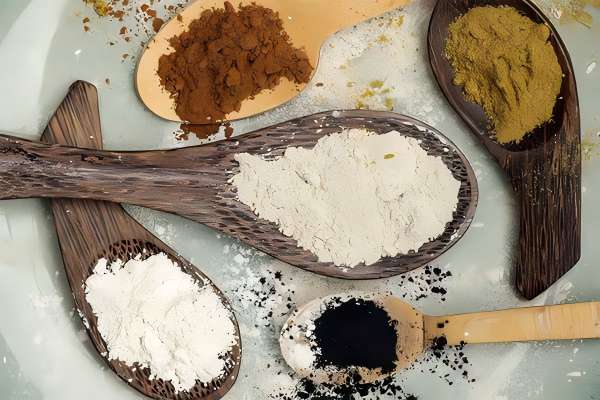
Example 1: Silicon Dioxide
- Introduction: Silicon dioxide is a widely used anti-caking agent in seasonings. It absorbs moisture and prevents clumping, keeping powdered seasonings free-flowing.
- Recommended Dosage: The typical dosage is between 0.5% and 2% of the total weight.
Example 2: Calcium Silicate
- Introduction: Calcium silicate is another anti-caking agent that prevents seasonings from clumping due to moisture absorption.
- Recommended Dosage: It is used in concentrations ranging from 0.1% to 2%.
Example 3: Tricalcium Phosphate
- Introduction: Tricalcium phosphate is frequently added to powdered seasonings as an anti-caking ingredient. It contributes to keeping the product’s fluid flow.
- Recommended Dosage: The recommended dosage is typically between 0.1% and 1%.
Example 4: Magnesium Carbonate
- Introduction: Magnesium carbonate is an effective anti-caking agent that prevents seasonings from clumping, especially in products prone to absorbing moisture.
- Recommended Dosage: It is usually added at concentrations between 0.5% and 1%.
Example 5: Sodium Aluminosilicate
- Introduction: Sodium aluminosilicate is a synthetic anti-caking agent that is often used in seasonings to maintain their powdery consistency.
- Recommended Dosage: The typical usage level is between 0.1% and 1% of the total weight.
Sweeteners
Sweeteners are added to certain seasonings to balance flavors or provide a sweet taste in products like barbecue rubs or sweet chili seasonings.
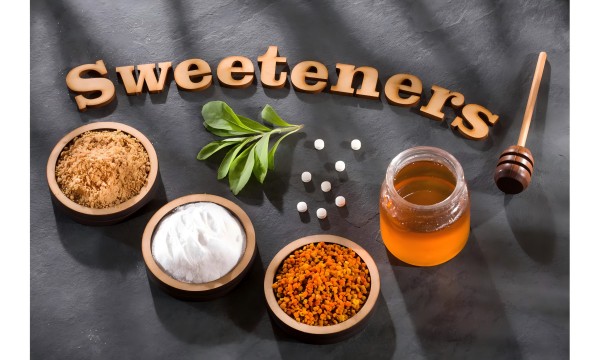
Example 1: Sucralose
- Introduction: An artificial sweetener hundreds of times sweeter than sugar is called sucrose. It’s frequently used in spices that are low in calories or sugar.
- Recommended Dosage: The recommended concentration ranges from 0.001% to 0.015% depending on the desired sweetness level.
Example 2: Aspartame
- Introduction: Aspartame is another popular artificial sweetener that is often used in diet seasonings and products aimed at reducing sugar content.
- Recommended Dosage: The typical concentration is between 0.01% and 0.03%.
Example 3: Acesulfame Potassium (Ace-K)
- Introduction: Acesulfame potassium is a calorie-free sweetener that is often used in conjunction with other sweeteners like sucralose or aspartame to enhance sweetness.
- Recommended Dosage: The typical dosage ranges from 0.005% to 0.05%.
Example 4: Stevia Extract
- Introduction: Stevia extract, a natural sweetener from stevia plant leaves, is used in sugar-free and low-calorie spices.
- Recommended Dosage: The concentration typically ranges from 0.01% to 0.05%.
Example 5: Xylitol
- Introduction: Xylitol is a sugar alcohol used as a sweetener in various seasonings, providing sweetness without the calories of sugar.
- Recommended Dosage: The recommended dosage for xylitol in seasonings is between 5% and 10%.
Antioxidants
Antioxidants are a crucial type of food additive used to prevent or slow down the oxidation of food products, which can lead to rancidity, discoloration, and spoilage. Oxidation occurs when food is exposed to oxygen, resulting in the degradation of quality, particularly in fats, oils, and seasonings that contain lipids.

Butylated Hydroxyanisole (BHA)
- Introduction: BHA is a synthetic antioxidant used to prevent rancidity in foods containing fats and oils. It is commonly used in seasonings, snacks, and processed foods. BHA helps protect the flavor and color of the product by delaying the oxidation process.
- Recommended Dosage: BHA is typically used at concentrations of 0.02% to 0.05% of the total product weight.
Butylated Hydroxytoluene (BHT)
- Introduction: Similar to BHA, BHT is another artificial antioxidant. It is used to stabilize fats and prevent oxidative rancidity in seasonings and other food products. BHT is often used in combination with BHA for enhanced antioxidant protection.
- Recommended Dosage: BHT is commonly added at levels of 0.01% to 0.02% of the total weight of the product.
Tocopherols (Vitamin E)
- Introduction: Tocopherols are natural antioxidants derived from vegetable oils and are a form of Vitamin E. They are widely used in seasonings, oils, and processed foods to prevent oxidation and maintain freshness. Tocopherols are popular in “clean label” products due to their natural origin.
- Recommended Dosage: The dosage of tocopherols in seasonings typically ranges from 0.02% to 0.2% of the product’s total weight.
Ascorbyl Palmitate
- Introduction: One fat-soluble form of ascorbic acid (Vitamin C) is ascorbyl palmitate. It is used as an antioxidant in seasonings and other fat-containing products to prevent oxidation and extend shelf life. Ascorbyl palmitate is effective in protecting the stability of both fats and oils.
- Recommended Dosage: The typical concentration ranges from 0.01% to 0.05% of the total product weight.
Rosemary Extract
- Introduction: An organic antioxidant called rosemary extract is made from rosemary leaves. It is used in seasonings, especially those with high-fat content, to delay oxidation and prevent rancidity. Rosemary extract is favored in natural and organic products as a plant-based alternative to synthetic antioxidants.
- Recommended Dosage: The recommended dosage of rosemary extract typically ranges from 0.05% to 0.5% of the total product weight, depending on the formulation.
Emulsifiers and Stabilizers
Emulsifiers and stabilizers are crucial components in food processing, especially in products where the combination of ingredients might naturally separate, such as oils and water. These additives help create uniform consistency, improve texture, and maintain the stability of food products over time. Emulsifiers work by allowing immiscible liquids (such as oil and water) to mix, while stabilizers help maintain the texture and consistency of the product.
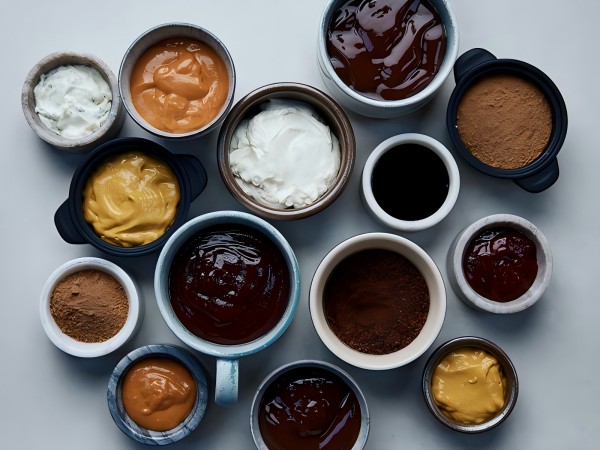
Emulsifiers
Emulsifiers are substances that aid in the blending of components that would often separate, like water and oil, to produce a homogenous and smooth end product.
Example 1: Lecithin
- Introduction: One natural emulsifier that comes from sources including eggs, sunflower seeds, and soybeans is lecithin. It is extensively utilized in goods including chocolate, margarine, and salad dressings.
- Recommended Dosage: Lecithin is typically used at concentrations ranging from 0.3% to 1% of the total product weight.
Example 2: Mono- and Diglycerides
- Introduction: Mono- and diglycerides are common emulsifiers that help prevent oil and water from separating in various food products, including baked goods, spreads, and whipped toppings.
- Recommended Dosage: The typical usage level for mono- and diglycerides ranges from 0.2% to 0.5% of the total product weight.
Example 3: Polysorbate 80
- Introduction: To maintain oil-in-water emulsion stability, Polysorbate 80, an artificial emulsifier, is utilized. It’s commonly found in sauces, ice creams, and drinks.
- Recommended Dosage: Polysorbate 80 is usually added at concentrations between 0.1% and 0.5%.
Example 4: Sodium Stearoyl Lactylate (SSL)
- Introduction: A strengthening of the dough structure is achieved by SSL, an emulsifier that enhances the texture and volume of baked foods. It also helps prevent fat and water separation in processed foods.
- Recommended Dosage: SSL is typically used at concentrations ranging from 0.2% to 0.5% of the total product weight.
Example 5: Sorbitan Monostearate
- Introduction: Sorbitan monostearate is a synthetic emulsifier used in products like whipped toppings, bakery products, and desserts to maintain a stable emulsion and improve texture.
- Recommended Dosage: The concentration of sorbitan monostearate typically ranges from 0.3% to 1% depending on the product.
Stabilizers
Additives known as stabilizers aid in preserving the texture and consistency of food items by halting the separation or alteration of constituents over time.
Example 1: Xanthan Gum
- Introduction: Xanthan gum, a polysaccharide, stabilizes and thickens foods like dressings, sauces, and gluten-free goods, maintaining viscosity and preventing separation.
- Recommended Dosage: The concentration of xanthan gum typically ranges from 0.05% to 0.3% of the total product weight.
Example 2: Carrageenan
- Introduction: Carrageenan, a stabilizer from red seaweed, enhances texture and prevents separation in dairy products, drinks, and processed meats.
- Recommended Dosage: The recommended dosage of carrageenan varies, but it is generally used at concentrations between 0.01% and 0.05%.
Example 3: Guar Gum
- Introduction: Guar gum is a natural stabilizer and thickener derived from guar beans. It is used in a wide range of products, including sauces, dairy products, and baked goods, to improve texture and consistency.
- Recommended Dosage: The typical concentration of guar gum in food products ranges from 0.2% to 0.8%.
Example 4: Pectin
- Introduction: Pectin is a natural stabilizer extracted from fruits, particularly apples and citrus fruits. It gives jams, jellies, and yogurts their characteristic gel-like consistency.
- Recommended Dosage: The concentration of pectin used in food products generally ranges from 0.5% to 1.5%.
Example 5: Gelatin
- Introduction: Gelatin is a natural stabilizer derived from collagen, commonly used in desserts, jellies, and gummy candies. It creates a firm and stable gel-like texture in food products.
- Recommended Dosage: Gelatin is typically used at concentrations ranging from 0.5% to 2% of the total product weight.
Conclusion
Food additives in seasonings play essential roles in enhancing flavors, preserving freshness, improving appearance, and maintaining the quality of the product. Understanding the common types of additives and their specific examples can help manufacturers create better, more consistent seasoning products that meet consumer demands. By using preservatives, flavor enhancers, colorants, anti-caking agents, and sweeteners responsibly, seasoning producers can ensure their products are not only delicious but also safe and visually appealing.
